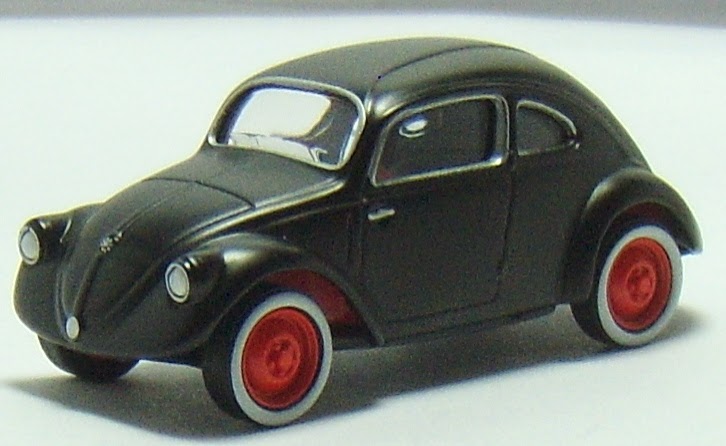Greenlight VW 30 and Matchbox 1962 VW Beetle
One of the most iconic cars of all time that helped create the Volkswagen brand is the Beetle. Even after a two decade disappearance from the US the Beetle reappeared to fanfare's delight. To get the history of the Beetle and how it began, just take a look at the Type 30 from Greenlight.
Click Here for Photo Gallery
Hitler's People Car
The Beetle started life in a not-so-great place in the history of Germany: Adolf Hitler and the rule of the Nazi's. While Hitler's focus was to rid of the Jews all over the world, he was also looking into advance technologies like the Autobahn and aero smooth cars produced by Mercedes-Benz and a company with four round rings that would become Audi. Ferdinand Porsche was ordered by Hitler to produce a compact four-seat car that would go anywhere, be fast, and durable, coining the name Volkswagen, which in German means 'People's Car.' Using some of the technologies found in the Auto Union race cars, the prototype beetles were aero smooth with a slight stamp on the hood resembling the shell of the beetle animal, exposed horn, smaller access panels front and rear, spine on the roof with a window inside the rear panel, one taillight with plate holder, backwards-opening doors, and smooth fender curves. The engine was in the back featuring a 29 hp. air-cooled flat-4 that moved the beetle briskly all while conserving fuel. The interior has practical seating for four with front seats that tilt up, but otherwise the interior was sparse with seats that have no padding, a speedometer in the center, and a 3-speed manual that was likely not synchromeshed.
Click Here for Photo Gallery
Development would continue under several prototypes until the final version, looking much like the Beetle we all know, appeared in 1938 to carry Hitler to his many campaign stops. When World War II ended, the VW Beetle seemed like a lost cause, but the truth is this was the car that was needed to nurse the battered Germany back to normal after the war. In 1948 the VW Beetle was on sale to the public, appearing in the US in 1949. Who knew a car that inherited the darkest part of the 20th century would become an icon for decades to come, spanning Busses, Passenger cars, Dune Buggies, and even the Porsche brand.
Click Here for Photo Gallery
Type 30 vs. Beetle
To help illustrate the differences with the Greenlight Type 30, I pulled out one of my Matchbox 1962 VW Beetles to illustrate. The first thing you'll notice is the lack of bumpers and its small size. The headlights pull out of the fenders instead of sitting flush like the '62. The horn is one central speaker instead of two smaller pods, the hood is a small port opening instead of the full-width hatch, and the latches have an asterik (*) star. The roof has two lines starting at the A-pillars that come together to form the spine at the rear, something that was removed on the Beetle, as does the engine cover mounted low to allow a rear window to improve visibility at the rear compared to the Type 30. Also the Beetle gets dual taillights and a plate mounted higher to allow for a rear bumper. Both still have the dual exhausts. Fenders now have a more traditional curve, while the wheels are a smidge smaller in height but a bit wider in length in the Beetle, and the doors are a more normal opening type.
Click Here for Photo Gallery
The interior is still spartan, but in the beetle has more features like a radio, more padding on the seats, and on this '62 even a sunroof to let the sun in. Over time more features would be added to the beetle to include signal lights and more interior amenities. The base is an interesting point: You can see the X-brace spine in the center that is more compact while making the body just as stiff as the body-on-frame counterparts (notice that unibody vehicles would not appear for a few more decades when the Type 30 was made). However, the suspension in the Type 30 was built into the frame like a torsion bar. This setup, which also wrapped around the engine, proved to be too costly to be durable and easy to change, so in the beetle the suspension would be separate, but still attached, to the frame, as does the engine, so servicing was much more easier to accomplish than the all-in-one frame setup of the Type 30.
Click Here for Photo Gallery
While there's plenty of Beetles around the diecast landscape, this Type 30 from Greenlight will be a unique one to have to show off the history of the Beetle's development.










Comments
Post a Comment